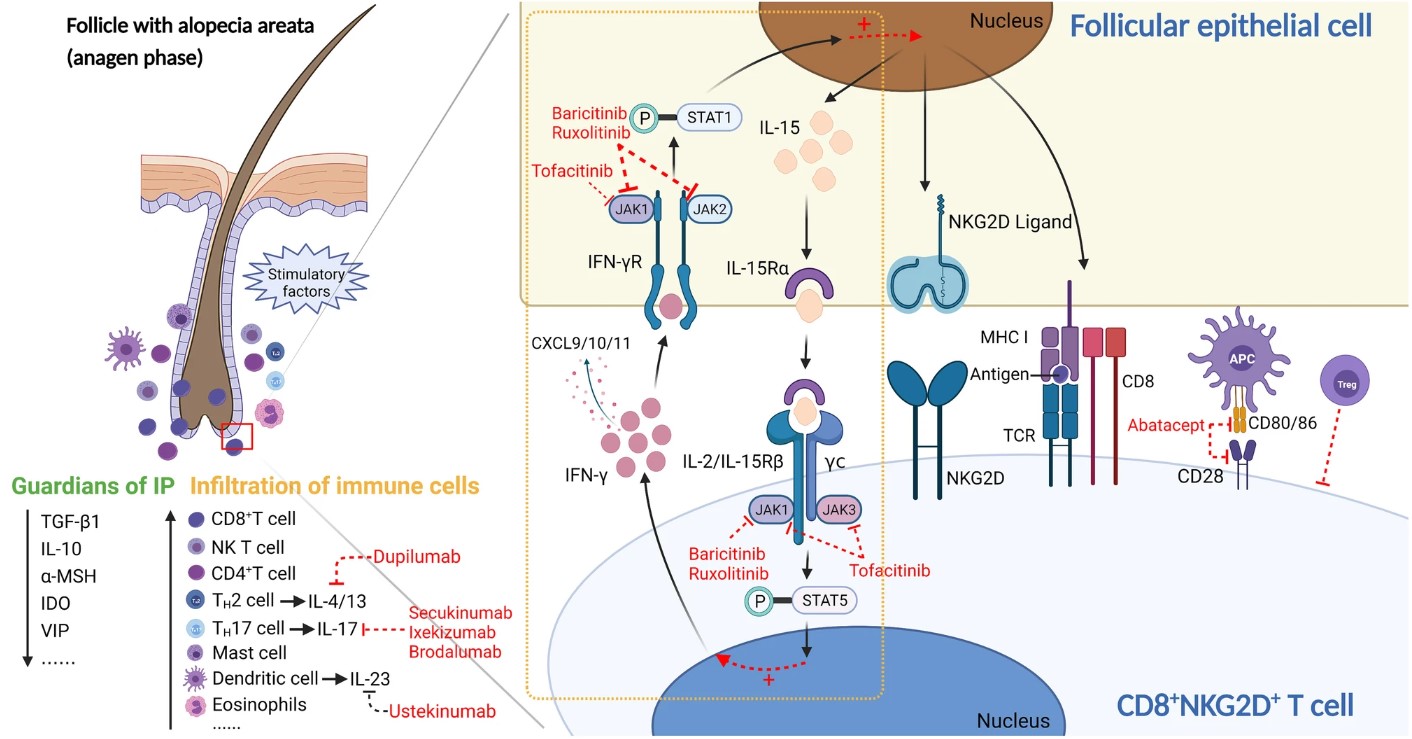- You are here: Home
- Disease Models
- Skin Disease Models
- Hair Growth Models
- Alopecia Areata (AA) Models
Disease Models
- Oncology Models
-
Inflammation & Autoimmune Disease Models
- Rheumatoid Arthritis Models
- Glomerulonephritis Models
- Multiple Sclerosis (MS) Models
- Ocular Inflammation Models
- Sjögren's Syndrome Model
- LPS-induced Acute Lung Injury Model
- Peritonitis Models
- Passive Cutaneous Anaphylaxis Model
- Delayed-Type Hypersensitivity (DTH) Models
- Inflammatory Bowel Disease Models
- Systemic Lupus Erythematosus Animal Models
- Asthma Model
- Sepsis Model
- Psoriasis Model
- Atopic Dermatitis (AD) Model
- Scleroderma Model
- Gouty Arthritis Model
- Carrageenan-Induced Air Pouch Synovitis Model
- Carrageenan-Induced Paw Edema Model
- Experimental Autoimmune Myasthenia Gravis (EAMG) Model
-
Cardiovascular Disease Models
- Surgical Models
- Animal Models of Hypertension
- Venous Thrombosis Model
- Atherosclerosis model
- Cardiac Arrhythmia Model
- Hyperlipoidemia Model
- Doxorubicin-induced Heart Failure Model
- Isoproterenol-induced Heart Failure Model
- Arterial Thrombosis Model
- Pulmonary Arterial Hypertension (PAH) Models
- Heart Failure with Preserved Ejection Fraction (HFpEF) Model
-
Neurological Disease Models
- Alzheimer's Disease Modeling and Assays
- Seizure Models
- Parkinson's Disease Models
- Ischemic Stroke Models
- Acute Spinal Cord Injury (ASCI) Model
- Traumatic Brain Injury (TBI) Model
- Hypoxic-Ischemic Encephalopathy (HIE) Model
- Tourette Syndrome (TS) Model
- Amyotrophic Lateral Sclerosis (ALS) Model
- Huntington's Disease (HD) Model
- Intracerebral hemorrhage (ICH) Models
- Pain Models
- Metabolic Disease Models
- Liver Disease Models
- Rare Disease Models
- Respiratory Disease Models
- Digestive Disease Models
-
Urology Disease Models
- Cisplatin-induced Nephrotoxicity Model
- Unilateral Ureteral Obstruction Model
- 5/6 Nephrectomy Model
- Renal Ischemia-Reperfusion Injury (RIRI) Model
- Diabetic Nephropathy (DN) Models
- Passive Heymann Nephritis (PHN) Model
- Adenine-Induced Chronic Kidney Disease (CKD) Model
- Kidney Stone Model
- Doxorubicin-Induced Nephropathy Model
- Orthopedic Disease Models
- Ocular Disease Models
- Skin Disease Models
- Infectious Disease Models
Alopecia Areata (AA) Models
As a leading authority in the field, Creative Bioarray is proud to offer our clients exceptional services tailored to meet diverse needs related to Alopecia Areata (AA). We have developed a range of sophisticated Alopecia Areata (AA) Models designed to facilitate comprehensive research and drug development. Our team of specialized scientists possesses extensive expertise in Alopecia Areata modeling, model selection, and conducting preclinical experiments. We are dedicated to providing support at every stage of your research process, ensuring that you have the resources and guidance necessary to accelerate your progress and achieve your objectives efficiently.
Introduction of Alopecia Areata (AA)
AA is a skin-related autoimmune disease characterized by non-scarring hair loss, affecting up to 2% of the population across various demographics. The condition arises from the breakdown of the hair follicle's immune privilege, primarily due to an overactive immune system targeting hair follicles. This immune privilege collapse is facilitated by increased secretion of interferon-gamma (IFN-γ) and the upregulation of certain molecules, leading to the exposure of hair follicle-associated autoantigens. Inflammation further induces the hair follicles into dystrophic phases, culminating in hair loss. The pathogenesis of AA is complex, involving CD8+NKG2D+ T cells and other immune cell subsets, highlighting the role of cytokines like IL-15 in a positive feedback loop that sustains the autoimmune attack.
 Fig.1 Immunopathogenesis of alopecia areata (AA). (Zhou et al., 2021)
Fig.1 Immunopathogenesis of alopecia areata (AA). (Zhou et al., 2021)
Our Alopecia Areata (AA) Models
Skin Grafts Induced Alopecia Areata (AA) Model
Cyclophosphamid Induced Alopecia Areata (AA) Model
IFN-γ Induced Alopecia Areata (AA) Model
Imiquimod (IMQ) Induced Alopecia Areata (AA) Model
Quotation and Ordering
Creative Bioarray stands out as an exceptional collaborator for the design, validation, and analysis of animal efficacy studies, thanks to our profound expertise and extensive experience in the field. If you are interested in our services, please do not hesitate to contact us at any time or submit an inquiry to us directly.
Reference
- Zhou, C., et al. Alopecia areata: an update on etiopathogenesis, diagnosis, and management. Clinical Reviews in Allergy & Immunology, 2021, 61(3): 403-423.
For research use only. Not for any other purpose.

